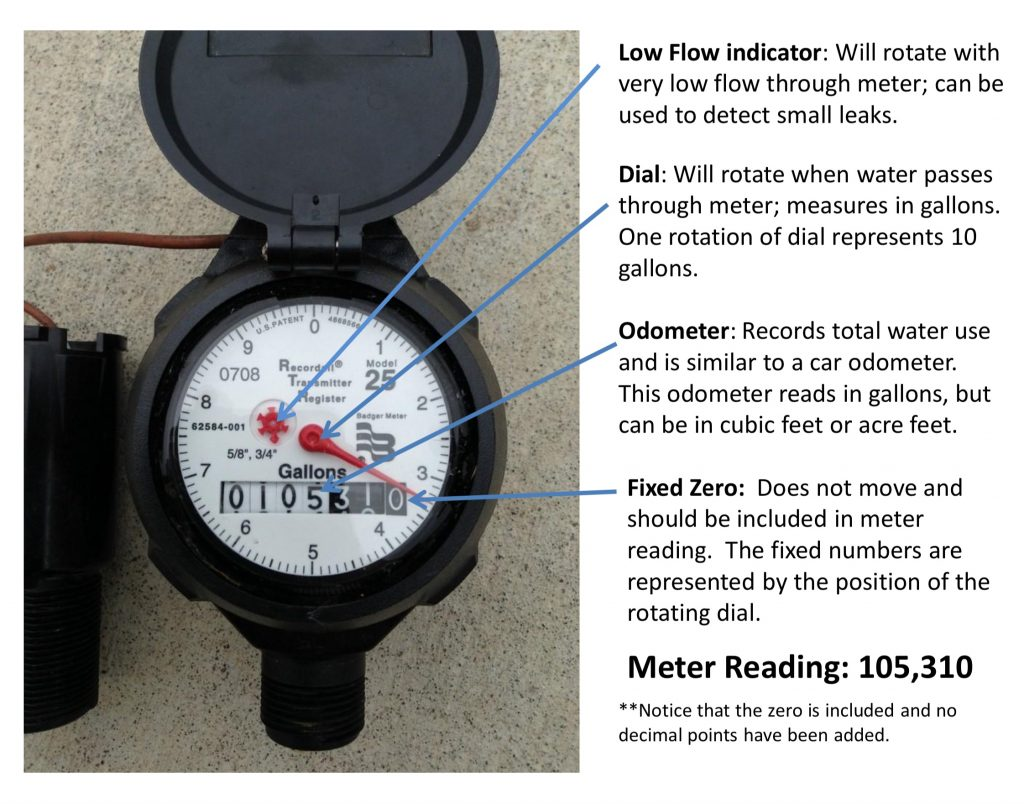How To
How to Read Your Water Meter
It is important that permittees know how to read their water meter accurately, as it is essential in tracking, managing, and conserving groundwater use.
Water meters come in a variety of makes and models and may measure water in different units (gallons, acre feet, or cubic feet). However, the following example is a commonly used throughout the District for domestic and livestock wells (5/8” x 3/4” line) and is read in gallons. When reading your meter, it is important to include any “fixed zeros” to the right of the movable numbers. The meter reading in the example below is 105,310 gallons. Notice that the zero is included and no decimal points have been added.

Image:
How to read a meter, with image of meter outlining specific parts
Image text:
Low Flow indicator: Will rotate with very low flow through meter; can be used to detect small leaks.
Dial: Will rotate when water passes through meter; measures in gallons. One rotation of dial represents 10 gallons.
Odometer: Records total water use and is similar to a car odometer. This odometer reads in gallons, but can be in cubic feet or acre feet.
Fixed Zero: Does not move and should be included in meter reading. The fixed numbers are represented by the postition of the rotating dial.
Meter Reading: 105,310
**Notice that the zero is included and no decimal points have been added.
Detecting a Water Leak
The best way to determine a leak is by monitoring your water meter. Turn of all water indoors and outdoors, including sprinklers, ice makers, etc and observe meter. If the low flow indicator moves, it may indicate a small, consistent leak. If the meter shows no obvious movement upon initial observation, record meter and return in a couple hours to see if there is any change; be sure not to use any water during the wait period.